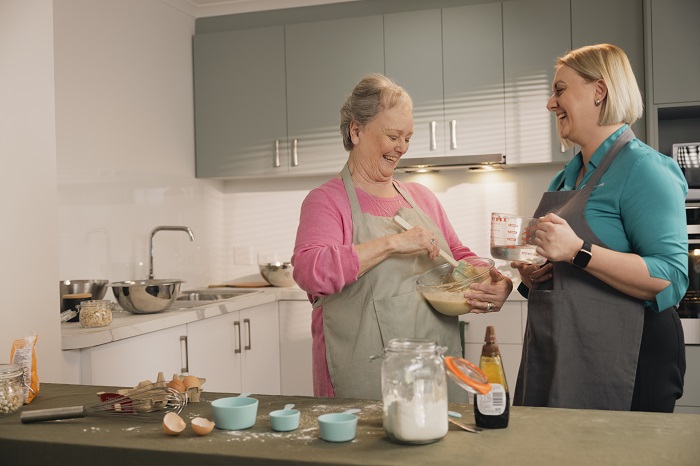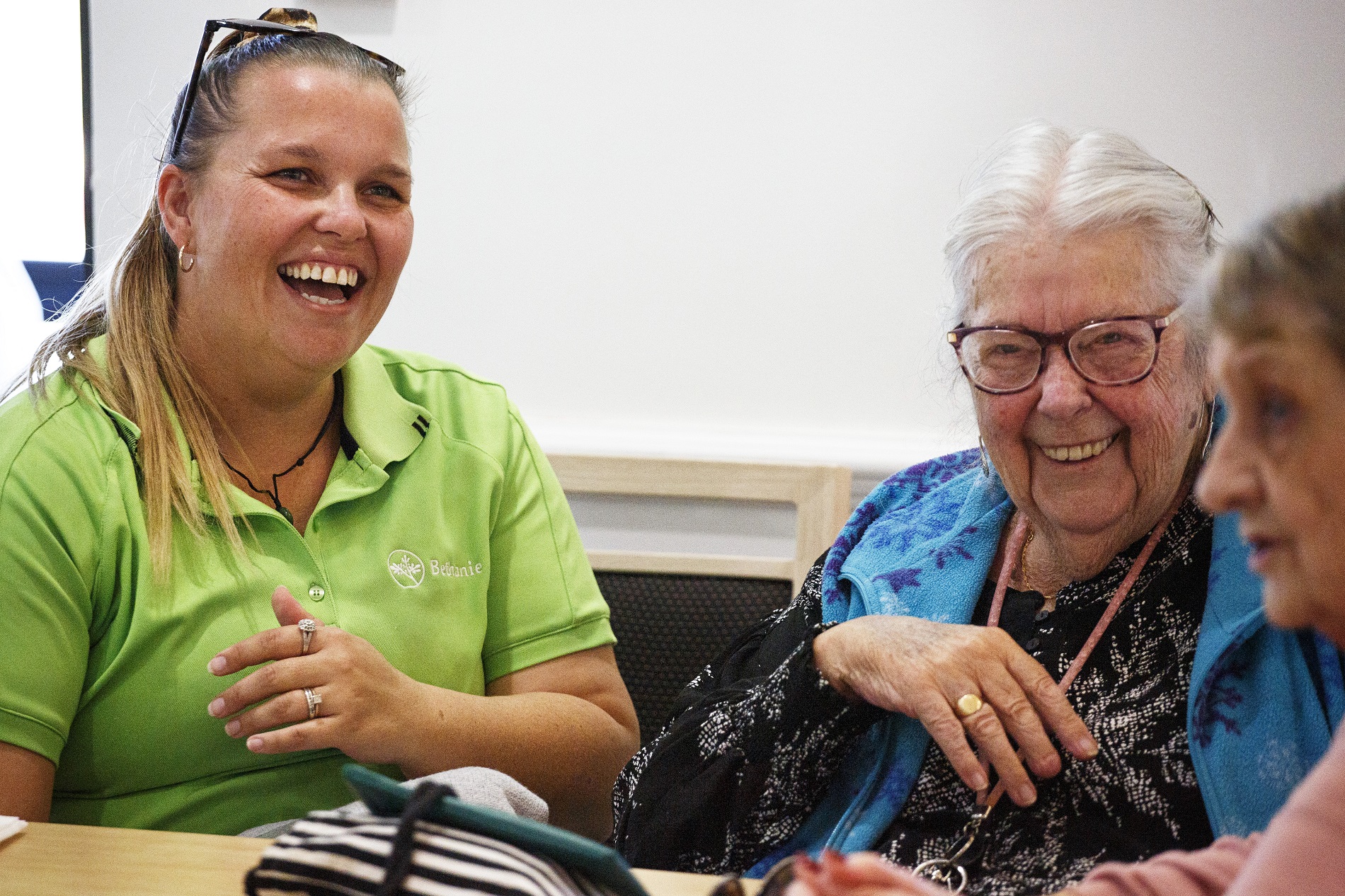
Where can I get more information?
There are some changes coming for participants already accessing Home Care Packages and we've outlined some of the frequently asked questions below.
You can also learn more about Support at Home from the Federal Government resources available on their website
Frequently asked questions
It is a Federal Government initiative that will replace Home Care Packages (HCPs) and Short-Term Restorative Care. Bethanie will be a Support at Home services provider as it has been with HCPs.
Support at Home will deliver a more streamlined in-home care service for participants, with benefits such as improved access to higher levels of care, greater flexibility, faster access to assistive technology, and more coordinated support to help older people remain safe, comfortable and independent at home.
Support at Home will have eight classifications for ongoing services, replacing the four levels under HCPs. Each classification has an annual budget for participants to access services, and the annual budget is divided into quarters.
Participants will be able to work with their in-home care service provider, such as Bethanie, to choose how to spend their budget based on their needs. These services might include:
-
Clinical care such as nursing and physiotherapy
-
Support for independence such as personal care, transport or respite
-
Everyday living such as cleaning, meal delivery or gardening.
Importantly, there remains no contribution charge for clinical care, regardless of financial status. Contributions will apply to other services that fall under independence or everyday living categories.
Support at Home will be able to facilitate home modifications, create faster access to assistive technology, and provide a new loan scheme to help older people buy equipment that can help keep them safe, comfortable and independent at home.
The first step for a participant is to get an aged care assessment, which allows the person to be classified into one of the eight budget levels in the Support at Home program.
A participant’s classification then informs an annual budget for an agreed set of services that are managed by a participant and their provider. The full list of services is available on the Federal Department of Health’s website .
At their initial assessment, participants will be allocated to one of the eight funding levels with an annual budget starting at $11,000 for Classification 1, up to $78,000 for Classification 8. This annual budget will be divided into quarterly allocations.
Once a participant has been assigned a classification, Bethanie will design a personalised care plan that outlines how the available funds will be used.
The indicative budgets modelled by the Federal Government
(subject to change) for each level are:
|
Classification |
Quarterly budget |
Annual amount |
|
1 |
~$2,750 |
~$11,000 |
|
2 |
~$4,000 |
~$16,000 |
|
3 |
~$5,500 |
~$22,000 |
|
4 |
~$7,500 |
~$30,000 |
|
5 |
~$10,000 |
~$40,000 |
|
6 |
~$12,000 |
~$48,000 |
|
7 |
~$14,500 |
~$58,000 |
|
8 |
~$19,500 |
~$78,000 |
Services accessed through Support at Home, such as physiotherapy, domestic assistance and meals, will be recorded against that budget, and the personal contribution required from the participant will be calculated and invoiced monthly.
Budgets will be divided into quarters and participants who do not use their full quarterly budget can save up to $1,000 or 10% (whichever is higher) for later use.
With the introduction of Support at Home, a moderate contribution will be required for independence services (such as personal care) and products and equipment, while the highest contribution will be applied for everyday living services such as domestic assistance or gardening.
Importantly, there remains no contribution charge for clinical care.
Participants will also have upfront access to assistive technology and home modifications through a separately funded scheme. This means people will no longer have to save their package funds for these supports.
Contributions will vary according to financial means, as illustrated in this Federal Government table:
These additional contribution changes will largely affect independence and everyday living services such as gardening or transport assistance. This approach will make the Support at Home program more sustainable and provide participants with the flexibility they need to continue living at home.
Importantly, participants will not be required to contribute to clinical services, regardless of their financial means. This will lower the barriers for accessing the vital services needed to live independently.
All existing participants who have a Home Care Package on 30 June 2025 will maintain the same level of funding and retain any unspent funds when they transition to Support at Home. In this way, the Government ensures no existing customer is worse off under the transition.
For people who were receiving a package on or before 12 September 2024, who were on the National Priority System at that date, or who were assessed at that date as eligible for a package, there will be no increase to your total contribution arrangements.
Under the transition rules, the amount these participants will contribute must remain the same or lower than they would have under the previous Home Care arrangements. If these participants move to residential care, they will stay on the existing contribution arrangements.
For participants who were approved for a package after 12 September 2024, a change to contribution arrangements will apply when Support at Home begins on July 1, 2025.
Contributions will be based on whether participants are on a full pension, a part pension or are a self-funded retiree, and these contributions will be centred around independence and everyday living services such as gardening or transport assistance. There will remain no contribution charge for clinical care.
Existing Home Care Package participants will also keep any unspent funds from their Home Care Package under the new Support at Home program.
Existing participants who are already receiving a Home Care Package or have been approved for a Home Care Package will automatically be transferred to Support at Home from 1 July 2025 by their provider.
Bethanie will provide every necessary support to ensure a smooth transition to Support at Home. There will be no changes to your current level of support.
All existing participants who have a Home Care Package on 30 June 2025 will maintain the same level of funding and retain any unspent funds under Support at Home. In this way, no existing customer will be worse off under the transition.
In the 2026 financial year (from 1 July 2025), Bethanie and other in-home aged care providers will continue to set their own prices for Support at Home services, as occurs under the current Home Care Packages Program.
However, from FY27 (1 July 2026), the Independent Hospital and Aged Care Pricing Authority (IHACPA) will set prices for services under the new model.
To support transparency, providers will be required to share pricing information with the Federal Government and participants, including existing clients.
Participants should prepare for substantial changes to pricing structures, as the package management fee will be removed. All administrative, care management and scheduling costs will need to be included within the hourly rate for services.
Under Support at Home, service providers like Bethanie will draw down 10% of participants’ budgets for care management, delivered by care partners. There will be no separate care management fee.
If your in-home care needs increase in the future and you need additional support, you can be reassessed using the Support at Home criteria and allocated to one of eight levels.
New participants who join the program after 1 July 2025, will automatically be assessed using the eight-level Support at Home criteria.
If you’re already receiving services through a Home Care Package, you don’t need to do anything right now. All HCP participants will be automatically moved across to Support at Home from 1 July 2025. Bethanie will be in touch before then to share the updated pricing and service information, and you will be asked to sign a new service agreement before the new program begins.
Bethanie will continue to communicate with participants and their families as we move closer to the start date, and we recommend that participants and their families and loved ones have a conversation to ensure that the changes coming with Support at Home are understood.
For those that are new to in-home care services, the first step for a participant is to get an aged care assessment, which allows the person to be classified and start accessing the services they need to live fulfilling lives at home for longer.


